Saturday 17 October 2015
Art and Photography Museums
Art
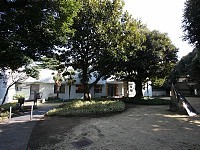 |
|
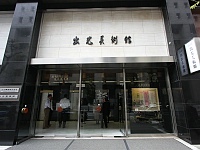 |
|
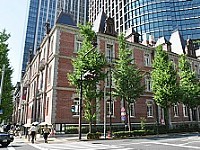 |
|
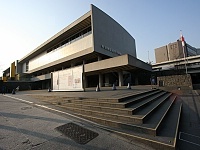 |
|
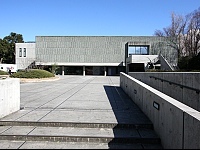 |
|
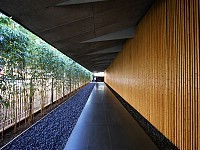 |
|
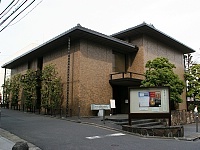 |
|
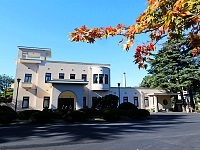 |
|
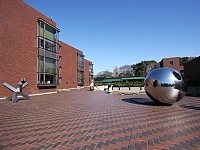 |
|
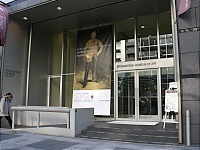 |
|
Roppongi Art Triangle
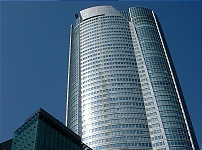 |
|
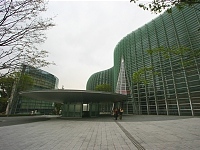 |
|
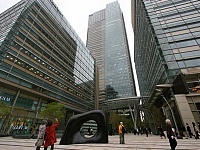 |
|
4Hours in Tokyo
as of June 2013
Sightseeing in Tokyo: Old Japan, New Japan
start at
 (c)Yasufumi Nishi
(c)Yasufumi Nishi
 (c)Shochiku Co., Ltd.
(c)Shochiku Co., Ltd.

[JR Tokyo Station]
Take snapshots around the station's beautifully restored building: 15 minutes
 (c)Yasufumi Nishi
(c)Yasufumi Nishi
↓ Walk 3 minutes to
[KITTE]
Visit JP Tower Museum Intermediatheque (IMT): 30 minutes (Free Admission)
↓ Walk 5 minutes to
[Marunouchi Cafe SEEK]
Take a Japanese handicrafts class: 40 minutes (Free of Charge)
↓ Walk 15 minutes to
[Ginza "Kabukiza Theatre"]
Take the tour and visit the gift shop: 60 minutes
See a single act of a kabuki play: About 30-90 minutes (varies by act); 900-2,000 yen
*Regular ticket for one performance (2-3 acts): 4,000-20,000 yen
See a single act of a kabuki play: About 30-90 minutes (varies by act); 900-2,000 yen
*Regular ticket for one performance (2-3 acts): 4,000-20,000 yen
 (c)Shochiku Co., Ltd.
(c)Shochiku Co., Ltd.
↓ Walk a few minutes to
[Ginza "Brand Street"]
Stroll the high-end boutiques of this famous luxury shopping district: 30 minutes
↓ Walk 7 minutes to
[Lunch at Sushi Bar]
Lunch: 30 minutes; approx. 1,000 yen

Estimated Total Budget: 3,000 yen
[Option A: Art Tour (1000 yen)]
[Option B: Business Building Tour (Free Admission)]
[Option C: Shopping and Gourmet Tour]
This itinerary is intellectually stimulating. It gives a point of contact with Japanese history, while also offering something new. We also focused on places that were reasonably priced.
JR Tokyo Station
 (c)Yasufumi Nishi
(c)Yasufumi Nishi
In continuous use for more than 90 years, the Tokyo Station building is the nexus of Japan's railway network. It is also a Tokyo landmark and architectural masterpiece. It was originally built in 1914, in the Gothic Revival style, and was designed by the renowned architect Tatsuno Kingo. Boasting a 335-metre long redbrick facade, it took six and a half years, and the combined efforts of 740,000 workers, to complete. During the war in 1945, it lost its iconic north and south domes, as well as other decorative features, to fire. A preservation and restoration project was launched in 2007 and completed in October 2012, returning the station building to its original appearance.
KITTE
Just opened in March 2013, KITTE is a shopping mall across the street from and directly connected underground to Tokyo Station.
Its 98 fascinating, highly original shops and restaurants reflect KITTE's strong "Japan" appeal and include 30 places selling fashion and fashion accessories. Prices for clothes and accessories tend to be more affordable than in shops in the Marunouchi and Shin-Marunouchi Buildings. The first basement floor features outposts of popular vendors of delicious traditional and modern delicacies representing many regions of Japan, all the way from Hokkaido to Okinawa. Plenty of free samples are on offer!
KITTE (the Japanese word for postage stamp) also includes the Intermediatheque (IMT), a museum jointly operated by Japan Post Co. Ltd. and the University Museum of the University of Tokyo (UMUT). The permanent exhibition of IMT consists of about 7,000 artefacts, which have been selected from the world-class collections accumulated by the University of Tokyo since its foundation in 1877. These objects are exhibited with a unique, eclectic design approach that the museum calls "retrofuturism." From wildlife specimens - including the extinct "elephant bird" Aepyornis, Moa eggs and giant crocodile skeletons - to the world's largest gold and platinum nuggets, to ancient pottery, IMT offers a new way to encounter important objects from both natural and cultural history.
IMT also hosts special exhibitions and events that highlight contemporary scientific research and artistic expression, while keeping to the same "retrofuturistic" curatorial approach as the permanent exhibition.
Consult the IMT website for schedules and other details :
http://www.intermediatheque.jp/en/schedule
http://www.intermediatheque.jp/en/schedule
Address
2-7-2 Marunouchi, Chiyoda-ku, Tokyo, 100-7001
2-7-2 Marunouchi, Chiyoda-ku, Tokyo, 100-7001
Marunouchi Cafe SEEK
Marunouchi Cafe SEEK opened in January 2012, to provide a venue that foreign visitors to Tokyo would find welcoming and genuinely useful. It offers convenient services including free Wi-Fi, a library of tourist literature and other resources of interest to foreigners visiting Japan. SEEK also serves as a gallery, presenting exhibits about Japanese art and culture. And it hosts events and hands-on classes related to traditional Japanese arts such as origami and calligraphy.
Adding to the convenience, on the first floor of the same building is a JNTO Tourist Information Center (TIC).
For more information, please visit the English website :
http://www.marunouchicafe.com/english/
http://www.marunouchicafe.com/english/
Address
2F Shin Tokyo Building, 3-3-1 Marunouchi, Chiyoda-ku, Tokyo 100-0005
2F Shin Tokyo Building, 3-3-1 Marunouchi, Chiyoda-ku, Tokyo 100-0005
Kabukiza Theatre
 (c)Shochiku Co., Ltd.
(c)Shochiku Co., Ltd.
Kabukiza Theatre is a flagship theatre of Kabuki, a traditional Japanese performing arts. It has stood on the same site since 1889. After a reconstruction, including the building of a multipurpose office high-rise, Kabukiza Theatre opened again in April 2013. The daily program consists of 2 or 3 performances with 2 or 3 acts each. The line-up changes monthly. If you'd like just a taste of Kabuki, withought spending too long at the theatre, a "hitomakumi" single act ticket is an economical way to see one part of a performance in this daily program. To enable non-Japanese speakers to follow the performance, an English Earphone Guide rental service is provided. Just go to the Earphone Guide counter to rent. The cost of the rental for a single act is 500 yen and for a full performance(2 to 3 acts) is 700 yen, with a 1,000 yen deposit that is refunded when you return the receiver.
You can also get a sense of the world of Kabuki in the Kabukiza Gallery and the Rooftop Garden.
For more information, please visit the English website :
http://www.kabuki-bito.jp/eng/
http://www.kabuki-bito.jp/eng/
Address
4-12-15 Ginza, Chuo-ku, Tokyo, 104-0061
4-12-15 Ginza, Chuo-ku, Tokyo, 104-0061
Lunch at Sushi Bar

There is a sushi bar which serves sushi with a creative twist, embracing the sushi rolls that are so popular in global sushi cuisine, while using innovative ingredients and preparation methods. The extensive menu (available in English) features seasonal vegetables and seafood, and includes more than 30 different original sushi rolls.
Option A: Art Tour (1000 yen)
Idemitsu Museum of Arts
The Idemitsu Museum of Arts is located in the Imperial Theatre Building, a 13-minute walk from Tokyo Station. It looks out over the beautiful gardens of the Imperial Palace. First opened in 1966 to exhibit the collection of East Asian antiques assembled over some 70 years by Sazo Idemitsu (1885-1981), it reopened after a renovation in 2007. The new space honours the traditional Japanese aesthetic of the museum's original design, while adding a contemporary touch. It provides an inviting, relaxing atmosphere in which to appreciate the museum's numerous artworks, many of them National Treasures or Important Cultural Properties. Many historical styles of Japanese painting, ukiyo-e woodblock prints, works by modern Japanese painters such as Kosugi Hōan, calligraphy, East Asian ceramics (ancient and modern) and more are represented. There are even a few Western painters on display. Themed special exhibitions are held six or seven times a year.
Consult the museum's English website for details:
http://www.idemitsu.com/museum/
http://www.idemitsu.com/museum/
Address
9th Floor, Teigeki Bldg., 3-1-1 Marunouchi, Chiyoda-ku, Tokyo, 100-0005
9th Floor, Teigeki Bldg., 3-1-1 Marunouchi, Chiyoda-ku, Tokyo, 100-0005
Option B: Business Building Tour (Free Admission)
Bank of Japan and Currency Museum
The Bank of Japan is a 12-minute walk from Tokyo Station. Completed in 1896, the Bank of Japan building was registered as an Important Cultural Property in 1974. With advance reservations, you can take an English-language tour of Bank of Japan facilities normally off-limits to the public, including the old underground vault, the former offices, and an archives display room.
The Currency Museum has a collection of about 4,000 artefacts, ranging from the currencies of Japan through the ages, and of other East Asian countries, to related items such as wallets and lottery tickets.
Highlights include authentic gold coins minted in the 16th century by samurai warlords, with full-scale replicas that visitors can pick up and handle, and a presentation on the latest anti-counterfeiting technologies used in current Bank of Japan notes. Various unique notes and coins from around the world are also on display.
For more information, please visit the English website :
http://www.boj.or.jp/en/about/services/kengaku.htm
http://www.boj.or.jp/en/about/services/kengaku.htm
Address
In-House Tours of the Bank: 2-1-1, Nihonbashi-Hongokucho, Chuo-ku, Tokyo,103-0021
Currency Museum (Institute for Monetary and Economic Studies): Bank of Japan Annex Building, 1-3-1 Nihonbashi-Hongokucho, Chuo-ku, Tokyo, 103-0021
Option C: Shopping and Gourmet Tour
Coredo Muromachi
Coredo Muromachi is a multipurpose complex a 14-minute walk from Tokyo Station in the historic Nihombashi district. It has five floors of retail, mainly eateries with a few other culinary-related shops. A common thread among these establishments is the convergence of the best of Japanese food traditions with fresh, contemporary flair. Coredo Muromachi's elegant decor evokes the classic Japanese architecture of teahouses and old-fashioned wooden homes.
For more information, please visit the English website :
http://mi-mo.jp/lng/eng/muromachi.html
http://mi-mo.jp/lng/eng/muromachi.html
Address
2-2-1 Muromachi, Muromachi Nihombashi, Chuo-ku, Tokyo, 103-0022
2-2-1 Muromachi, Muromachi Nihombashi, Chuo-ku, Tokyo, 103-0022
4 Hours in Takayama
as of July 2014
Sightseeing in Takayama: Experience the history, customs, and culture of the Hida-Takayama region
Option A: Takayama Samurai Manor House
Takayama Jinya-mae Morning Market: 30 minutes (Free)

The Takayama Jinya-mae Morning Market is held 365 days a year in front of the samurai manor, with vendors selling freshly harvested seasonal produce. During the winter, you can also buy mochi rice cakes and New Year decorations.
English website: http://www.jinya-asaichi.jp/english/index.html
Takayama Manor House: 50 minutes (430 yen)

Originally the estate of the Kanamori clan who ruled Takayama Castle, the Manor housed officials sent from Edo (Tokyo) to administer the Hida region after the area came under direct rule of the Shogun. Built in 1816, it is the only one of the 64 Shogunal administration buildings that remains. The storehouse for rice collected as taxes dates to the 1600's and is now used to exhibit historical artefacts.
English website: http://www.pref.gifu.lg.jp/English/tourism/takayama/
Nakabashi Bridge

This picturesque red bridge connects the historic old town of Takayama with the Jinya manor house. It makes an especially striking view in the snow and during cherry blossom season. Four times a year, once in each season, the bridge is illuminated.
↓Walk 5 minutes
Cross Nakabashi Bridge to Takayama old town.
Option B: Museums
Takayama Museum of History and Art: 80 minutes (Free admission)

Exhibits cover the establishment of the castle town and its merchant quarter, and the city's heritage down to the present day. The themes of the 14 exhibition rooms include festivals, architecture, the town's literary and artistic heritage, and Enku Buddhist woodcarvings.
Option C: Hida Folk Village
Start at

Takayama Station
Board Sarubobo Bus (200 yen)
(Hida Takayama Town Bus: http://www.hida.jp/traffic/bus_route.pdf)
(Hida Takayama Town Bus: http://www.hida.jp/traffic/bus_route.pdf)
↓ Ride 10 minutes
[Hida Folk Village]: 45 minutes (700 yen)

Board Sarubobo Bus (200 yen)
↓ Ride 15 minutes
Get off at Takayama Station
Board Machinami Bus (100 yen)
↓ Ride 10 minutes
Get off at Takayama Jinya-mae
Hida Folk Village: 45 minutes (700 yen)

The Folk Village brings together 30 historic buildings typical of the Hida region, featuring the distinctive steep-roofed gassho-zukuri architecture and traditional thatched roofs, designed to withstand heavy snow. A stroll through the village gives an insight into what rural life was like here generations ago. The houses contain examples of typical farm implements and household utensils from the old days. Demonstrations and hands-on lessons of traditional crafts such as straw work, quilting and weaving are held year-round.
English website: http://www.hidanosato-tpo.jp/english12.htm
The following is included in all options (A, B & C)

[Lunch]: 35 minutes
↓ Walk 10 minutes
[Kusakabe Mingeikan (Kusakabe Folk Museum)]: 40 minutes (500 yen)

Stroll around Old Town (Sanmachi Historic Preservation District): 70 minutes

The Kanamori clan, which originally ruled Takayama, built housing for samurai on higher ground around the castle. The merchant quarter is at a slightly lower elevation.
The district retains its historic appearance and charm, water channels flowing in front of quaint buildings with latticed windows and projecting eaves. Here and there you see the hanging pine needle balls that traditionally mark sake makers.
The district retains its historic appearance and charm, water channels flowing in front of quaint buildings with latticed windows and projecting eaves. Here and there you see the hanging pine needle balls that traditionally mark sake makers.
Lunch: 35 minutes
Hida Chuka Soba Noodles: 600 yen
Unique style of hearty ramen with local ingredients
Hobamiso Lunch Set: 1,800 yen
Local beef grilled over magnolia leaves with miso and negi
Mountain vegetable lunch set: 1,800 yen
Lunch set featuring mountain vegetables and other local delicacies
Unique style of hearty ramen with local ingredients
Hobamiso Lunch Set: 1,800 yen
Local beef grilled over magnolia leaves with miso and negi
Mountain vegetable lunch set: 1,800 yen
Lunch set featuring mountain vegetables and other local delicacies
English website: http://www.hida.jp/english/cuisine.htm
Kusakabe Mingeikan (Kusakabe Folk Museum): 40 minutes (500 yen)

This historic townhouse is registered, along with the adjoining Yoshijima House, as an Important Cultural Property. It is a fine example of the rustic beauty of traditional Japanese folk architecture, its imposing post-and-beam interior creating an evocative atmosphere in which to learn about daily life and culture in old Takayama.
Bonus destination (if time available)
Takayama Festival Floats Exhibition Hall: 30 minutes (820 yen)
Eleven festival floats are paraded each fall in the Takayama Matsuri (acclaimed as one of Japan's most gorgeous festivals). Four of these are displayed here on a rotating basis throughout the year.
English website: http://www.hidahachimangu.jp/english/index.html
For further information about Takayama, please visit: http://www.hida.jp/english/
Takayama city area map: http://www.hida.jp/english/admin/wp-content/uploads/2012/01/dl_city.pdf
Takayama city area map: http://www.hida.jp/english/admin/wp-content/uploads/2012/01/dl_city.pdf
4 Hours in Kanazawa
as of January 2015
Sights of Kanazawa Strolling Tour
Start at





[Kanazawa Station]
Board Kanazawa Loop Bus (Right Loop) (200 yen)
↓ Ride 20 minutes
[1. Kenroku-en Garden & Kanazawa Castle Park] 80 minutes (500 yen)

↓ Walk 15 minutes
[2. 21st Century Museum of Contemporary Art, Kanazawa] 30 minutes (Free for Public Zone)

↓ Walk 3 minutes
[3. Kanazawa Crafts Hirosaka] 20 minutes

Board Kanazawa Loop Bus (Right Loop) (200 yen)
↓ Ride 20 minutes
Get off at Kanazawa Station
[Lunch: Teishoku Set Meal] 60 minutes (2,000 yen)
For lunch tips, check the Dining Out page of Eye on Kanazawa (a local English-language free newspaper)
http://www.eyeon.jp/dining/cuisine.html
http://www.eyeon.jp/dining/cuisine.html
Total Cost: 2,900 yen
Option
90 minutes (Maki-e lesson: 3,240 yen)
At Nosaku, a lacquerware shop that's been in business for centuries, try your hand at painting a design on lacquer and highlighting it with decorative powder.
At Nosaku, a lacquerware shop that's been in business for centuries, try your hand at painting a design on lacquer and highlighting it with decorative powder.

60 minutes (Admission: 260 yen)
Ishikawa Prefectural Museum of Traditional Arts and Crafts
Ishikawa Prefectural Museum of Traditional Arts and Crafts

English website:
http://www.ishikawa-densankan.jp/english/index.html
http://www.ishikawa-densankan.jp/english/index.html
A stroll through Kanazawa's classic sights…and its newest attractions
1. Kenroku-en Garden & Kanazawa Castle Park
80 minutes (Admission: 500 yen)

Ranked as one of Japan's three greatest traditional gardens, Kenroku-en was created during the Edo Period over the course of centuries by the samurai lords of the Kaga domain. The basic concept behind the garden is "immortality", with the large pond representing the oceans, and the small islands within it representing dwelling places of ageless sages. Altogether, the garden symbolizes the aspiration to eternal life and prosperity.
A bridge leads to Kanazawa Castle Park, where you can see the Ishikawa Gate, which survives from the Edo Period, and faithful reconstructions of other fortifications such as Hishi Yagura turret and the Gojukken Nagaya storehouse. The Maeda clan, who ruled Kaga and constructed the garden, were second in wealth only to the Tokugawa shoguns. While most of the historic structures that made up their residence at Kanazawa Castle were lost to a series of fires, in recent years many have been meticulously reconstructed using historical documentation and authentic period techniques.
The Gojukken Nagaya storehouse and Kawakita-mon gate are available to host exhibitions and post-convention events.
A bridge leads to Kanazawa Castle Park, where you can see the Ishikawa Gate, which survives from the Edo Period, and faithful reconstructions of other fortifications such as Hishi Yagura turret and the Gojukken Nagaya storehouse. The Maeda clan, who ruled Kaga and constructed the garden, were second in wealth only to the Tokugawa shoguns. While most of the historic structures that made up their residence at Kanazawa Castle were lost to a series of fires, in recent years many have been meticulously reconstructed using historical documentation and authentic period techniques.
The Gojukken Nagaya storehouse and Kawakita-mon gate are available to host exhibitions and post-convention events.
English website:
http://www.pref.ishikawa.jp/siro-niwa/english/top.html
http://www.pref.ishikawa.jp/siro-niwa/english/top.html
2. 21st Century Museum of Contemporary Art, Kanazawa
30 minutes (Admission: Free for Public Zone)
 © Kanazawa City/© JNTO
© Kanazawa City/© JNTO
This museum occupies two stories (one above ground, one below) in a brand-new glass-clad building designed by Kazuyo Sejima and Ryue Nishijima, the famous duo of Pritzker-winning architects known as SANAA. Many of the artworks in the museum, including Leandro Erlich's The Swimming Pool, are immersive installations, making this a fun destination for the whole family.
English website:
https://www.kanazawa21.jp/en/
https://www.kanazawa21.jp/en/
3. Kanazawa Crafts Hirosaka
20 minutes (Admission: Free)

This shop carries a wide selection of items from Kanazawa's unique craft traditions. Kaga inlay work, Kaga fishing flies and eight other crafts ranging from paper to embroidery are represented. There is a gallery featuring works by traditional master artisans, many available for purchase. These carefully curated items offer classic beauty that fits contemporary lifestyles. A perfect spot to buy souvenirs and gifts.
English website:
http://www.kanazawa-tourism.com/eng/guide/guide1_1.php?no=6
http://www.kanazawa-tourism.com/eng/guide/guide1_1.php?no=6
Option A: Making Maki-e
Nosaku (Maki-e lesson: 3,240 yen)

During the Edo Period, superbly crafted Kanazawa lacquerware was held in such high regard that it was given as gifts to samurai lords, and even as tribute to the shogun himself. One signature technique was maki-e, in which gold dust is sprinkled over designs painted in wet lacquer. The gold created a glittering contrast with the deep hues for which Japanese lacquer is famous.
Nosaku has been dealing in lacquerware since 1780. On their elegant premises, full of the atmosphere of old Japan, they offer you the rare opportunity to make a maki-e piece of your own.
Nosaku has been dealing in lacquerware since 1780. On their elegant premises, full of the atmosphere of old Japan, they offer you the rare opportunity to make a maki-e piece of your own.
Nosaku, Inc. English homepage:
http://www.kanazawa.gr.jp/nosaku/english/index.html
http://www.kanazawa.gr.jp/nosaku/english/index.html
English website about the art of Kanazawa maki-e:
http://shofu.pref.ishikawa.jp/shofu/kougei1_e/sikki_e/index.html
http://shofu.pref.ishikawa.jp/shofu/kougei1_e/sikki_e/index.html
Option B: Traditional Ishikawa Crafts
Ishikawa Prefectural Museum of Traditional Arts and Crafts (Admission: 260 yen)

The 36 designated traditional crafts of Ishikawa Prefecture, of which 10 are awarded special recognition by the Japanese government, are presented in comprehensive fashion at the Ishikawa Prefectural Museum of Traditional Arts and Crafts. The museum even offers interactive exhibits on weekends. The museum is located just off the Kodatsuno Entrance to Kenroku-en.
English websites:
http://www.ishikawa-densankan.jp/english/index.html
(Ishikawa Prefectural Museum of Traditional Arts and Crafts)
http://www.ishikawa-densankan.jp/english/index.html
(Ishikawa Prefectural Museum of Traditional Arts and Crafts)
Kanazawa Convention Bureau
http://www.kanazawa-cb.com/index_e.html
http://www.kanazawa-cb.com/index_e.html
Subscribe to:
Posts (Atom)









